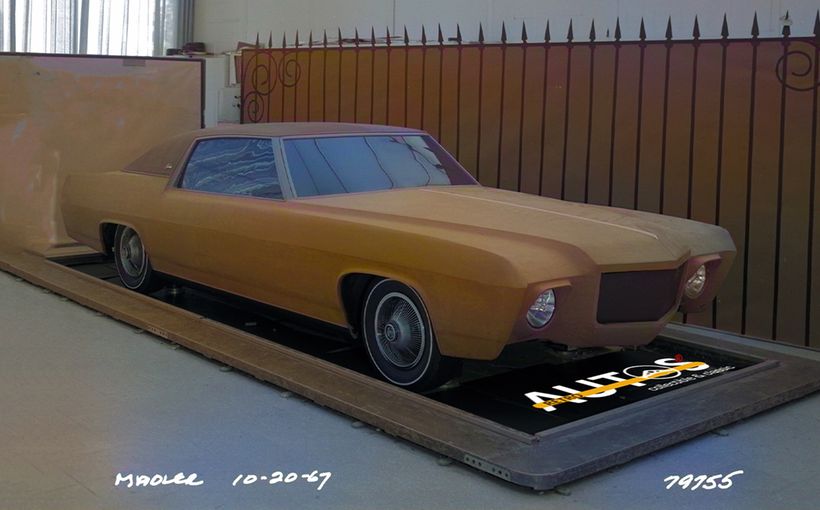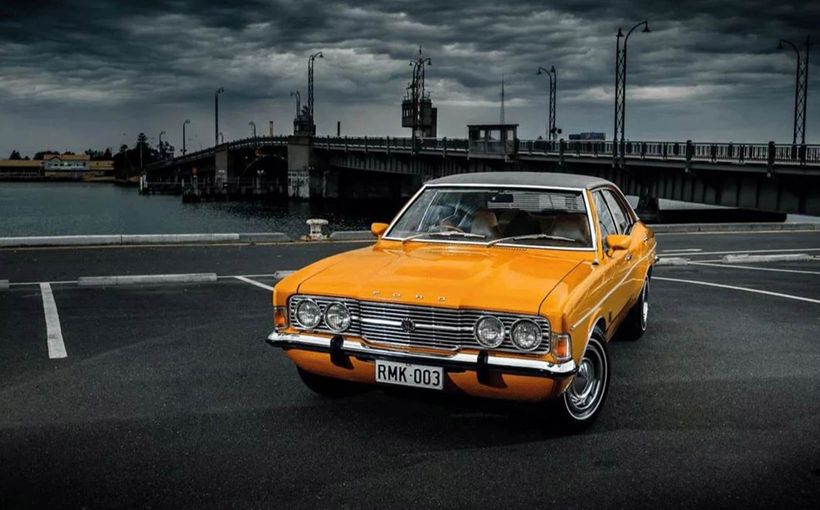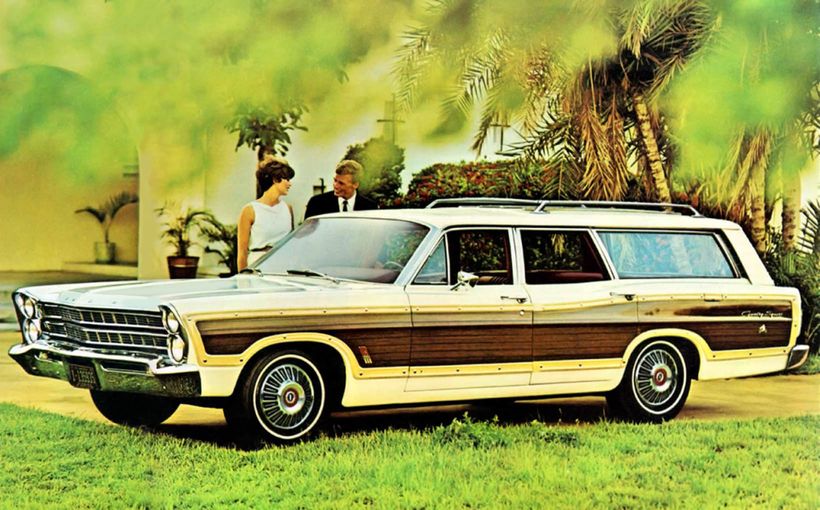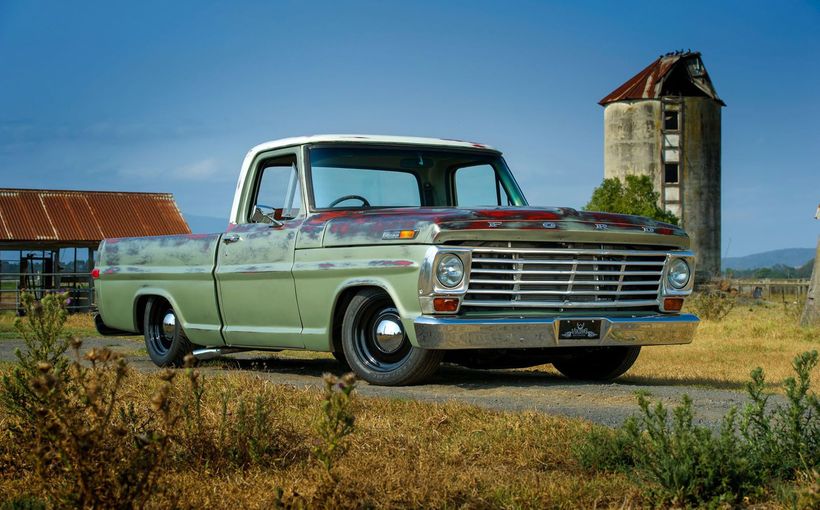Ford Cortina TC/TD: Great expectations not met.

The original 1962 Ford Cortina is one of the key cars of the twentieth century. It was arguably the first ever mainstream British sedan designed from the start to appeal to an international audience. Two contradictory elements in its name reveal how the Ford UK marketing men (and in the 1958-1961 era they were men!) struggled to reconcile this reaching out to the world with the continuing need to satisfy British customers. From 1962 until the launch of the facelifted model in 1964, the Cortina’s full name was Ford Consul Cortina; by 1964 the Consul moniker already belonged to a bygone era.

While ‘Consul’ harked back to the early 1950s when it was used on the four-cylinder version of the Zephyr, ‘Cortina’ was straight homage to Europe, specifically the Italian ski resort Cortina d’Ampezzo, home to the 1956 Winter Olympic Games which were held at just about the time the Ford product planners were beginning to contemplate how they would eventually replace the then newly released Ford Consul Mark Two.
The Cortina soon established itself as Britain’s best-selling car and effectively countered the radical front-wheel drive technology chosen by the British Motor Corporation. The first Cortina effectively defined the new international medium-sized sedan with an overall length of 14 feet and a choice of 1.2-litre or 1.5-litre four-cylinder engines driving the rear wheels. Even as a 12 year-old, when the Cortina went on sale, I knew exactly what ‘orthodox’ meant, and this new Ford defined automotive orthodoxy in 1962. Its counterparts in Europe included the Fiat 1300/1500 and the Peugeot 404.

In 1966 the Mark Two with its curvier styling by Roy Haynes – and haven’t the Mark Two’s lines aged more gracefully than those of the somewhat similar Hillman Hunter? – remained essentially true to the 1962 formula. Four years on, the entry level engine had grown to 1.3 litres but length was unchanged. Then in 1967 a new 1.6-litre unit with a crossflow cylinder head replaced the 1.5.

The 1970 TC Mark III, known simply by its initials in Australia, seemed to expand the possibilities of Cortina motoring. Its designation stood for Taunus-Cortina and for the first time the British and the Germans shared the one basic design. The TC looked bigger than its predecessors but, interestingly, its length remained pegged at the old 14 feet, despite the fact that the car was built on a three-inch longer wheelbase and was a full four inches wider.

Launched locally just months after the HQ Holden, at first sight the new TC Cortina seemed to represent an automotive dream come true. Whether Ford Australia’s public relations team organised to have its test cars especially tweaked for the media, I can’t say. But I can say that road tests revealing a top speed as high as 113 miles per hour (not Wheels) and a standing 400-metre time of 17.2 seconds were not reflective of the 2.0-litre TC Cortinas that made their troubled way down the production line at Ford Australia’s Broadmeadows plant. These numbers were marginally superior to the real world capabilities of the Alfa Romeo Alfetta sedan, still months away from its European launch! To put the 2.0-litre Cortina into further perspective, I’ll mention that the 202 six in the Kingswood running through the optional four-on-the-floor manual gearbox was good for about 85 mph and 19 seconds respectively.
The 2.0-litre engine in question was the US-designed Pinto belt-driven single overhead camshaft unit. It was inexpensively optional on the TC from day one and quickly proved vastly more popular than the carryover 1.6-litre overhead valve unit.
Wheels editor Peter Robinson expressed dismay at the reported performance variations between different examples of the TC:
Will the real Cortina 2000 please stand up?
Our latest encounter with the two-litre edition bears out stories we’ve heard about relatively wide variations in performance from the overhead-cam mill.
When we first tested a 2000 (November 1971), we found the engine to be a wonderful performer – simply outstanding. It would cover the standing quarter-mile in 17.2 seconds, and ran to within a whisker of 110 mph in top.
With about 4000 miles on the clock, the latest example should have been in the pink of condition. But first time out it couldn’t get under 20 seconds for the standing quarter and barely reached 90 mph flat chat. We found the air cleaner intake was in the Winter position, facing towards the exhaust manifold but couldn’t turn it ahead to Summer because the tabs on the plastic spout had worn off.
Parts worn out after 4000 miles? The story continues. Robbo sent the Cortina off to get it tuned. Freshly fettled, the car managed 18.2 seconds and an even 100 mph.
Even had that dream of Alfa-beating performance been true, the TC Cortina would still have been the bitter disappointment it quickly proved to be to many – perhaps most – owners.
In a Wheels four-car comparison in which the TC placed second behind the Datsun 180B, ahead of the Torana 1900 and Corona, the Cortina’s notorious habit of shedding parts was noted. I’ve never forgotten as an undergraduate student asking one of the Student Health doctors how he liked his new TC Cortina. ‘Whenever something falls off, I stop the car pick it up and put it in the boot,’ he replied. ‘I’ve almost got enough to build another car.’ (I don’t think this dreadful reputation inspired a weird ad for a fast food product which claimed to be made from Cortina seats among other ingredients…)

The aforementioned comparison was published in the November 1974 edition and the TD (just one on from TC, but rendering that Taunus-Cortina reference immediately irrelevant) was nearly due for release. Shortcomings of the TC were duly noted but with references to how some of these would be addressed on the next model. That particular Cortina 2000 was better, managing 17.6 seconds and 101 mph. But it still scored five out of 10 for finish with the Corona getting eight.
If the Cortina had been a character in a fairytale, it would have been the Boy Who Cried Wolf or, rather, Ford Australia’s PR machine was that boy. The TD was supposed to fix the shortcomings of the TC, while the TE was supposed to be a far superior car again. And then came the final Cortina, the TF, still essentially a dud, albeit a very handsome one!

Before dealing with the TD, let’s have a look at the TC model lineup. The entry level model was the 1600L with just 78 brake horsepower. Next up was the XL but the supposed ‘Extra Luxury’ didn’t even include a radio or a reclining mechanism for the front bucket seats. The newly introduced (to Australia) Cortina wagon was available in both seriously basic L guise or as an XL. The 2.0-litre engine made 112 bhp and was optional for what now looks like nominal money – $85.

Ford Australia’s marketing executives were almost as slow as their Holden counterparts in responding to the higher equipment levels offered by Japanese rivals. That Corona which placed last in the comparison (due mainly to its dreadful ride and what the testers regarded as the difficulty of driving it smoothly at low speeds) offered a heated rear window, radio, reclining front seats, four armrests on the doors, an ‘excellent’ heating/ventilation system and logically arranged controls: Toyota 8, Cortina 6.
And now we get to what must have seemed like an incredibly good idea at the time. The six-cylinder versions of the LC and LJ Torana were proving very popular despite obvious shortcomings. And so the Ford Australia product planners reckoned it would be very clever to drop the heavy Falcon six-cylinder engines into the TC engine bay. Much body strengthening was required to persuade a body which had never been intended to carry such a lump up front to do so. This had advantages for the four-cylinder models, too, which became significantly more robust than their UK equivalents. (But ‘robust’ doesn’t mean the panel fit on Aussie cars was up to the mark!)

All Cortina Sixes got quad headlights, which was a typically smart piece of Ford marketing. There was no problem with the image, only the reality!

Now the Cortina TC sixpacks might have worked very well in the US, where at last count there were about five corners between the East Coast and the West Coast. But at anything more than very moderate cornering speeds on near perfect surfaces, the car was diabolical. The engineers’ fiddling could not address the car’s nose-heaviness. And it still had those Jane Austen era cart springs on the rear. Wet roads and a little bit of pressure on the throttle and, hey presto, you were sideways or, at best, wheel-spinning furiously. There was insufficient front suspension travel.
The pity is that the TC Cortina Six could have been a wonderful car, had it been designed in the first place to accommodate these engines. The 130 bhp 200 cubic-inch six (3.3-litre) gave good performance, while the 250 (4.1) with 155 bhp transformed the Cortina into a missile… unguided. In four-speed manual guise it actually matched the numbers achieved by early TC 2000s in some road tests, covering 400m in 17.4 and reaching 112 mph. That made it equal to the Alfetta but with far more torque.
To maximise commonality with the Falcon, both the L and the XL Cortina sixes had three-on-the-tree but a three-speed auto and four-speed manual were optional.
Wheels magazine conducted a ‘unique’ comparison which appeared in the January 1973 issue, in which Peter Robinson announced there would be no 1972 Wheels Car of the Year winner. You can’t help feeling that the Cortina Six was the biggest loser: ‘If Ford’s quality control improved 100 percent – and there were no rough roads – the Cortina Six would probably have won.’ This comparison pitted a 4.1-litre Falcon against a 4.1-litre Cortina and a 2.0-litre Cortina. In many respects the Cortina Six seemed to be the superior car, especially over the 18-inch longer and much heavier Falcon: the six weighed 1179kg, while the four was just 1025 and the Falcon 1405; power to weight was all the way of the sixpack Cortina. The 400m took 18.2 in the Cortina 2000, 18.1 in the Falcon and 17.4 in the Cortina Six with top speeds being 100, 101 and 112 respectively.
Pricing tells us much about the times. You could buy a 2000L for $2675 or an XL for $2815. Radials cost an extra $53 and reclining seats $30. Impressively, the six-cylinder L and XL were just $2895 and $3035. The 250 six cost a mere $75 more than the 200, the Falcon GT four-speed manual added $155. So the total for the test XL Six was $3128 before adding on-road costs. But one left-field competitor came in the elegant guise of the Falcon Hardtop which entered the contest at $3195.
In those mostly pre-power steering days, one further comparison between the Cortinas and the Falcon is interesting. Both Cortinas needed 3.7 turns lock to lock on a 9.74m turning circle, while the Falcon took a full five for 12.03: which car would you rather steer?
And Wheels’s conclusion? ‘The further we drove the Cortina Six, on smooth roads, the more we liked it. It strikes an appealing balance between the Four and the Falcon and has a best-of-both-worlds character that can be appreciated by everyday and enthusiast drivers alike.
The public warmed to the idea of a hot Cortina, albeit one almost as different from the Lotus-Cortina as could be imagined and the 4.1-litre version in particular sold well. Always the clever marketers, Ford Oz used this opportunity to introduce a higher-spec XLE variant with something of a mini-Fairlane flavour. It got a vinyl roof, elaborate hubcaps – we had not really arrived in the era of factory alloys – bumper overriders and other new features. The automatic transmission was standard (but you could specify a four-speed manual as fitted to the Falcon GT). In January 1973 the XLE cost $3525 while the 1600L manual was barely two-thirds the price at $2385.

I say the Cortina Six could have been a wonderful car. Here, essentially, was the forgotten formula expressed in the original Holden 48-215 and subsequently in the Vauxhall Velox and Ford Zephyr: light car, torquey big engine. In a sense, it was Holden who had re-imagined the 48-215 with the LC Torana sixes. They provided the encouragement for rivals to follow. The most extreme failure of this approach was seen in the Morris Marina Six, but I won’t go there now! Chrysler had the Centura sixes. And, later again, Mazda offered its 626 with V6 power.
Despite all Ford Australia’s efforts, the Cortina’s market share was slumping. In 1972 it held 23.6 per cent of its segment but by August 1974 the percentage was down to 15.6 and the Cortina sat in fourth behind GMH, Toyota and Mazda.
The TD facelift had arrived in early 1974 but done little to improve the Cortina’s dwindling popularity. The most important change was an all-new dashboard. The TD shared the XB Falcon’s steering column, wheel and control stalks. Numerous mechanical improvements were made to the suspension, exhaust and brakes. Interestingly, the front anti-roll bar was deleted but one was fitted at the rear. The reason for this was to reduce understeer, but according to A.J. van Loon’s test of a TD XLE for the March 1975 issue of Wheels, when the car was pushed hard understeer remained a problem. Reclining front buckets were now standard across the range.
The flow-through ventilation, which was essentially a Ford innovation introduced with the original Cortina, was improved with volume said to be up by 77 per cent. But for various Wheels road testers, the problem remained – paradoxical, given the early Cortina’s success in this technology; according to van Loon, ‘the reason for the poor ventilation may lie in the air having trouble getting out again’.
The flagship XLE got corduroy cloth seats. Colour-coordinated inertia reel front belts were standard across the range. And whenever the 4.1-litre engine was fitted that car got radials – what a pity no-one had thought to do this in TC days!
The XLE got rectangular quartz halogen headlights. And all TDs got new plastic grilles, which immediately differentiated them from their predecessors.
That test XLE had the three-speed automatic, which limited top speed to 100 mph at a lazy 4000 rpm, with the 400 metres taking 17.8 seconds.
History tells us that the TD failed to right all the wrongs of the TC but it is fair to say that the handling of the Sixes became less evil, while the inherent balance of the 2.0-litre car – the marginal 1.6-litre engine having long since been dropped – was enhanced. There was plenty to like about the TD, but it did not achieve the necessary standard of build quality. Panel fit, for example, remained very poor and so did door opening efforts, thanks in part to bad handle design. In the end, neither the next generation TE nor even the facelifted TF – the last ever Ford to bear the Cortina sub-brand – achieve a satisfactory level of quality or reliability. Nevertheless, these cars, especially the 4.1-litre XLE, are now of considerable interest to collectors.

Now just imagine if Ford Australia had gone all out to produce a limited edition sports sedan variant of the XLE with the 250 2V engine running through a free-flowing exhaust system, with Bilstein dampers in a re-tuned suspension, wider alloy wheels with superior tyres, a nice little leather-bound sports steering wheel and so on. Not only would that be a car to treasure, but it would have represented Ford’s own reinterpretation of the traditional Aussie sixpack sedan, and been a standout model back when a standing 400m time in the 17s and a top speed capability north of 110 miles per hour remained rare among tintops. As it is, when we think of Cortinas, we generally picture either a Lotus Cortina ‘Mark 1’ or the first Cortina GT, in bright red!









